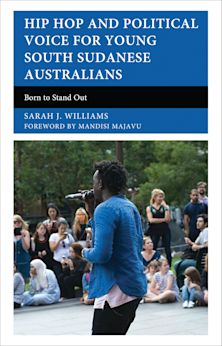- Home
- ACADEMIC
- Politics & International Relations
- Politics - Other
- Transnational Roots of the Civil Rights Movement
Transnational Roots of the Civil Rights Movement
African American Explorations of the Gandhian Repertoire
Transnational Roots of the Civil Rights Movement
African American Explorations of the Gandhian Repertoire
This product is usually dispatched within 1 week
- Delivery and returns info
-
Free CA delivery on orders $40 or over
You must sign in to add this item to your wishlist. Please sign in or create an account
Description
How did African Americans gain the ability to apply Gandhian nonviolence during the civil rights movement? Responses generally focus on Martin Luther King’s “pilgrimage to nonviolence” or favorable social contexts and processes. This book, in contrast, highlights the role of collective learning in the Gandhian repertoire’s transnational diffusion.
Collective learning shaped the invention of the Gandhian repertoire in South Africa and India as well as its transnational diffusion to the United States. In the 1920s, African Americans and their allies responded to Gandhi’s ideas and practices by reproducing stereotypes. Meaningful collective learning started with translation of the Gandhian repertoire in the 1930s and small-scale experimentation in the early 1940s. After surviving the doldrums of the McCarthy era, full implementation of the Gandhian repertoire finally occurred during the civil rights movement between 1955 and 1965. This book goes beyond existing scholarship by contributing deeper and finer insights on how transnational diffusion between social movements actually works. It highlights the contemporary relevance of Gandhian nonviolence and its successful journey across borders.
Table of Contents
CHAPTER 2: Invention of the Gandhian Repertoire
CHAPTER 3: Initial Perception of Gandhi
CHAPTER 4: Translation of the Gandhian Repertoire
CHAPTER 5: Experimentation with the Gandhian Repertoire
CHAPTER 6: Survival in the Doldrums
CHAPTER 7: Full Implementation of the Gandhian Repertoire
CHAPTER 8: From Heyday to Decline
CHAPTER 9: Conclusion
Product details
| Published | Nov 04 2011 |
|---|---|
| Format | Hardback |
| Edition | 1st |
| Extent | 220 |
| ISBN | 9780739145777 |
| Imprint | Lexington Books |
| Dimensions | 241 x 161 mm |
| Publisher | Bloomsbury Publishing |
About the contributors
Reviews
-
Sean Chabot’s book describes and analyzes the decades of collective struggle that produced the Gandhian approach to nonviolent resistance in the American civil rights movements, and the decades of collective learning that enabled African Americans to apply this approach. For an understanding of how innovative protest methods travel between social movements as different and distant as the Indian independence movement and American civil rights movement, scholars and activists could not do better than to read this book.
Sidney Tarrow, Cornell University, author of Power in Movement and The New Transnational Activism
-
More theoretically sophisticated than existing historical accounts of the adoption of Gandhian non-violence by black civil rights leaders and far richer historically than most sociological accounts of the diffusion of movement tactics, Chabot has written the best book to date on the “transnational roots of the Civil Rights Movement.” A welcome addition to both social movement studies and the historiography of the “long” civil rights movement.
Doug McAdam, Stanford University


































